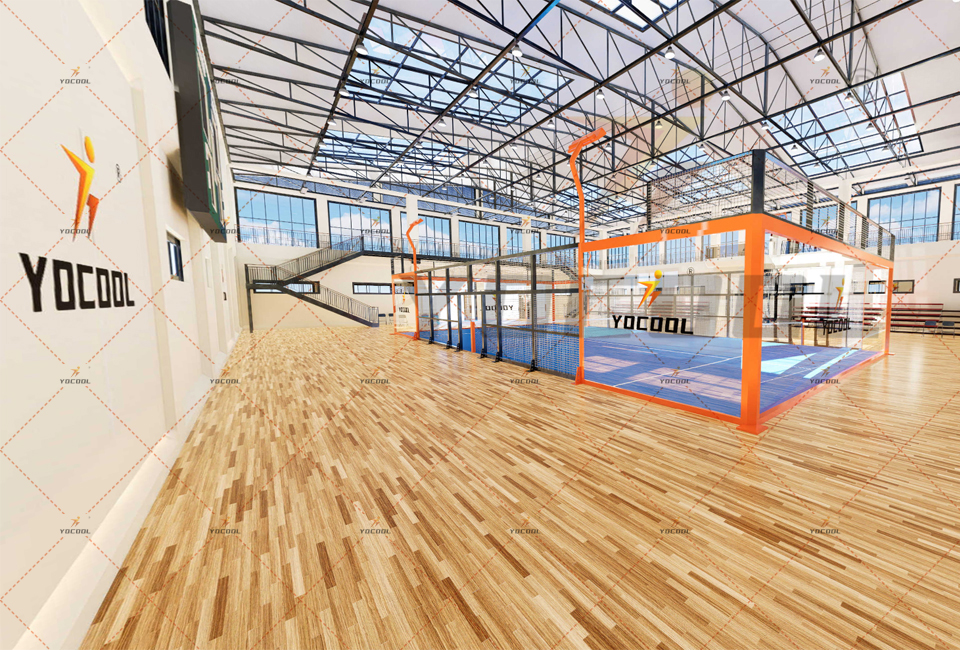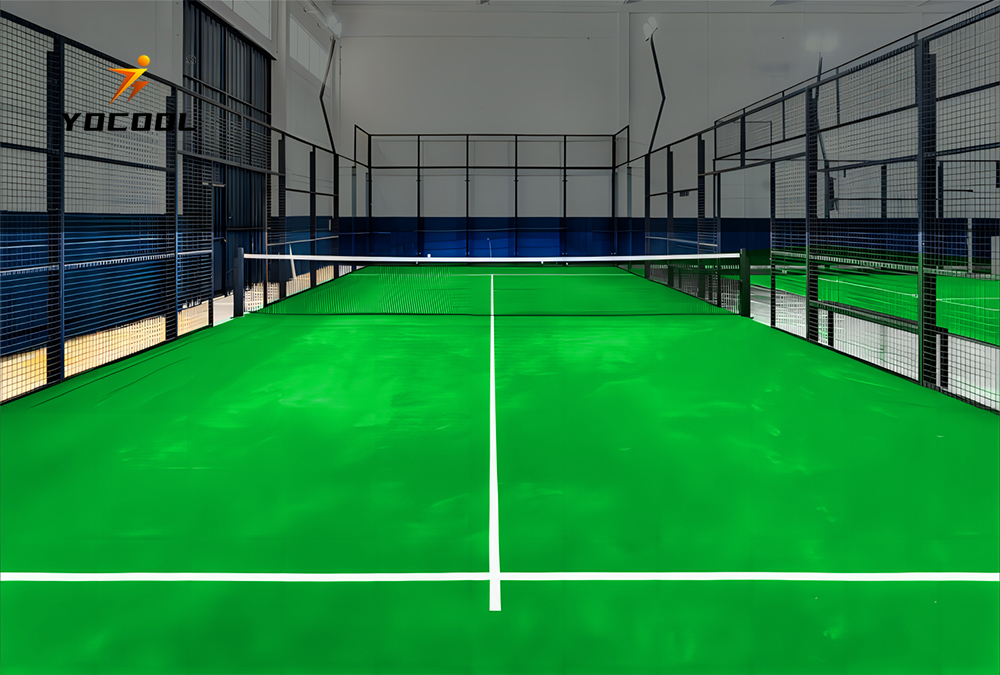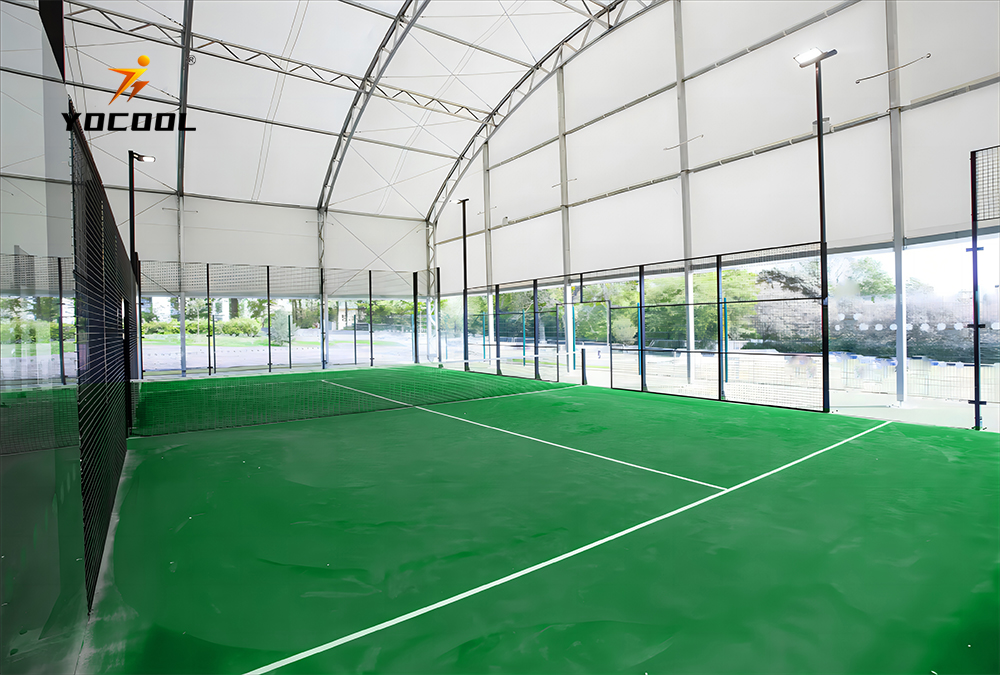

The global sports equipment market continues its dynamic expansion, with padel tennis emerging as one of its fastest-growing segments. This rapid ascent has significantly impacted the design, manufacturing, and demand for high-performance paddle tennis rackets. Modern players, from recreational enthusiasts to professional athletes, demand equipment that offers a superior blend of power, control, durability, and comfort, driving manufacturers to innovate relentlessly. Current industry trends point towards increased adoption of advanced composite materials, sophisticated aerodynamic designs, and integrated vibration dampening technologies. The proliferation of panoramic padel courts and padel tennis court facilities worldwide further fuels this demand, creating a vibrant ecosystem for racket development and sales. As the sport gains traction in new geographical regions and attracts a wider demographic, the emphasis on customized solutions and specialized rackets tailored to diverse playing styles becomes paramount.
Manufacturers are responding to these shifts by investing heavily in R&D, focusing on how different racket shapes (round, tear-drop, diamond), core materials (EVA, FOAM), and surface textures can optimize performance for specific player profiles. The push for sustainability is also becoming a notable trend, with some brands exploring eco-friendly materials and production processes. Moreover, the integration of smart technologies, though still nascent, holds promise for future racket generations, potentially offering real-time performance feedback. For B2B stakeholders, understanding these macro trends is crucial for strategic procurement, inventory management, and market positioning within the competitive paddle court equipment sector. This comprehensive insight ensures that partners can consistently offer cutting-edge products that meet the evolving demands of both professional clubs and individual consumers, cementing their reputation as reliable suppliers in the dynamic sports industry.
The creation of a high-performance paddle tennis racket is a meticulous process, integrating cutting-edge material science with precision engineering. It typically begins with the selection of premium raw materials, primarily high-modulus carbon fiber, fiberglass, and various types of EVA foam or polyethylene for the core. Carbon fiber sheets, renowned for their strength-to-weight ratio and rigidity, are laid up in specific orientations within a mold. This layup process, critical for defining the racket’s flex and power characteristics, involves multiple layers of pre-impregnated (pre-preg) carbon fiber, often in biaxial or triaxial weaves, to achieve desired structural integrity and performance attributes. The choice of core material, whether soft EVA for comfort and ball exit, or hard EVA for power and control, significantly influences the racket's feel and responsiveness on the padel court.

Following the layup, the assembly is placed into a heated mold under high pressure. This process, known as compression molding or curing, fuses the layers of carbon fiber with the resin matrix and the core material, forming a monolithic structure. Post-molding, the raw racket undergoes CNC machining for precise drilling of the face holes and trimming of excess material. These holes are strategically placed to reduce air resistance and optimize the sweet spot. Surface finishing involves sanding, applying protective coatings, and graphic decals. Quality control is paramount at every stage, adhering to strict internal standards and often aligning with international specifications. This includes checks for weight, balance point, structural integrity, surface flatness, and cosmetic appearance. The lifespan of a high-quality paddle tennis racket can vary, typically ranging from 1 to 3 years depending on frequency of use and care, with professional-grade models engineered for peak performance over extended periods. This rigorous manufacturing ensures that each racket delivers consistent performance, crucial for competitive play on any panoramic padel court.
Understanding the technical specifications of paddle tennis rackets is crucial for B2B buyers seeking optimal performance and value for their clientele. Key parameters include weight, balance point, core density, frame material composition, and surface texture. These elements collectively determine a racket's power, control, maneuverability, and vibration dampening capabilities. For instance, a heavier racket (typically 370-390g) with a higher balance point (head-heavy) generally offers more power, suitable for aggressive players. Conversely, lighter rackets (350-370g) with a lower balance point (handle-heavy) provide greater control and quicker reactions, ideal for defensive play and precision. The core material, such as Soft EVA, Medium EVA, or Hard EVA, dictates ball exit speed and feel; Soft EVA provides more rebound and comfort, while Hard EVA offers greater control and durability for powerful strokes.

Our NO.2 Panoramic Padel Orange, designed for exceptional all-around performance on any padel court, exemplifies these specifications. Its construction harmonizes power and control, making it a versatile choice for intermediate to advanced players. Below is a comparative table illustrating typical specifications across different types of paddle tennis rackets, demonstrating how each parameter contributes to overall playability and suitability for various player profiles and court conditions, including those found on a panoramic padel court. This data empowers purchasing managers to make informed decisions that align with specific market demands and player expectations, ensuring optimal stock and customer satisfaction.
| Parameter | Power-Oriented Racket (Diamond/Tear-drop) | Control-Oriented Racket (Round) | All-Around Racket (NO.2 Panoramic Padel Orange - Tear-drop) |
|---|---|---|---|
| Weight (g) | 370-390 | 350-370 | 365-375 |
| Balance Point (mm from handle) | 270-290 (High) | 250-270 (Low) | 265-275 (Medium) |
| Core Material | Hard EVA | Soft EVA / Polyethylene | Medium Density Black EVA |
| Frame Material | 100% Carbon Fiber (3K/12K/18K) | Carbon Fiber / Fiberglass Blend | 100% Carbon Fiber |
| Face Material | 12K/18K Carbon Fiber | Fiberglass / 3K Carbon Fiber | 3K Carbon Fiber |
| Thickness (mm) | 38 | 38 | 38 |
| Shape | Diamond / Oversize Tear-drop | Round | Tear-drop |
| Power Rating (1-10) | 8-10 | 6-7 | 7-8 |
| Control Rating (1-10) | 6-7 | 8-10 | 7-8 |
| Target Player Level | Advanced/Pro | Beginner/Intermediate | Intermediate/Advanced |
The diverse range of paddle tennis rackets caters to various application scenarios, from casual games on a local padel court to high-stakes professional tournaments played on a panoramic padel court. For professional sports clubs and training academies, selecting rackets that provide optimal performance and longevity is critical. Our products, like the NO.2 Panoramic Padel Orange, are engineered for durability, crucial in high-usage environments, reducing replacement costs and maintaining consistent equipment quality for members. In retail settings, offering a variety of rackets, including entry-level options for new players and advanced models for seasoned enthusiasts, allows distributors to capture a broader market segment. The technical advantages of our rackets include superior vibration dampening due to integrated anti-vibration systems and multi-layered core construction, minimizing arm fatigue and enhancing player comfort during prolonged play. Furthermore, the optimized sweet spot, achieved through meticulous hole pattern design and frame geometry, ensures consistent ball striking even on off-center hits, significantly improving player confidence and performance.

Beyond standard offerings, customization solutions for paddle tennis rackets are increasingly sought after by B2B clients looking to differentiate their brand or cater to specific team requirements. We offer extensive OEM/ODM capabilities, allowing partners to specify racket shapes, weights, balance points, core materials, and aesthetic designs including custom logos and color schemes. This level of customization ensures that rackets can be tailored precisely to the performance needs of various player groups or aligned with corporate branding initiatives for sports events or club sponsorships. Our engineering team works closely with clients through a structured design and prototyping phase, ensuring all technical parameters and aesthetic preferences are met. This bespoke approach delivers unique products that stand out in a competitive market, enhancing brand loyalty and market penetration for our B2B partners.
Our commitment to Google's (Expertise, Experience, Authoritativeness, Trustworthiness) principles underpins every aspect of our operations, from product design to customer support. Our expertise in manufacturing paddle tennis rackets is evidenced by our deep understanding of advanced composite materials and their mechanical properties, enabling us to engineer rackets with specific attributes like optimal flex, torsional rigidity, and impact absorption. We regularly participate in industry forums and collaborate with material science experts to stay at the forefront of innovation. Our experience spans over a decade in the sports equipment sector, during which we have served a global clientele including major sports retailers, professional padel court complexes, and national sports federations. Our comprehensive service cases include large-scale equipment provisioning for new panoramic padel court installations and ongoing supply chain management for established distributors, ensuring seamless operations and consistent product availability.
Our authoritativeness is reinforced by our adherence to international quality management standards, including ISO 9001 certification for our manufacturing processes, which guarantees consistent product quality and reliability. We rigorously test our paddle tennis rackets using industry-standard protocols for durability, impact resistance, and performance metrics such as power index and control index, with results validated by third-party laboratories. Our long-standing partnerships with leading sports organizations and equipment providers further demonstrate our trusted position in the industry. For B2B partners, we provide comprehensive documentation, including detailed product specifications, material safety data sheets, and performance test reports. Our commitment to trustworthiness is reflected in transparent pricing, clearly defined delivery schedules, and robust warranty programs. We offer a standard 1-year warranty against manufacturing defects for all our paddle racquets, underscoring our confidence in product quality. Our dedicated customer support team is available to assist with product selection, technical queries, and after-sales service, ensuring a smooth and reliable partnership experience.
A1: Our standard lead time for bulk orders of paddle tennis rackets typically ranges from 4 to 6 weeks, depending on the order volume, level of customization, and current production schedule. For urgent requirements, we encourage clients to discuss their specific needs with our sales team, and we will endeavor to accommodate accelerated timelines where feasible. Our streamlined manufacturing process, combined with efficient supply chain management, allows us to maintain competitive delivery periods without compromising on product quality. We provide clear communication throughout the production cycle, from order confirmation to shipment tracking, ensuring transparency and reliability for all our B2B partners.
A2: Choosing the right paddle racquet shape is crucial for optimizing performance on the padel court. Round-shaped rackets typically have a lower balance point and a larger sweet spot centered closer to the handle, offering superior control and easier maneuverability, ideal for defensive players or those new to the game. Tear-drop shaped rackets, like our NO.2 Panoramic Padel Orange, offer a balanced blend of power and control, with a sweet spot that is slightly higher and larger, making them versatile for intermediate to advanced players who desire both offensive and defensive capabilities. Diamond-shaped rackets have the highest balance point and a smaller sweet spot positioned towards the top of the racket, maximizing power and making them suitable for aggressive, advanced players who prioritize strong offensive shots. Your choice should align with your target audience's predominant playing style and skill level.
A3: Our manufacturing facility adheres to stringent quality control standards, including ISO 9001 certification for our quality management systems. This ensures that every stage of the production process, from raw material inspection to final product assembly and packaging, meets internationally recognized benchmarks for quality and consistency. Furthermore, our paddle tennis rackets undergo rigorous internal testing for durability, performance, and material integrity, often surpassing industry averages. We conduct tests for impact resistance, flex tolerance, weight distribution accuracy, and surface finish quality to ensure that each paddle racquet delivers optimal performance and lifespan. Our commitment to these standards provides B2B clients with the assurance of receiving high-quality, reliable products that will satisfy their end-users on any paddle tennis court.
This is the last article
Best Paddle Tennis Rackets: Power, Control & Comfort
Premium Padel Court Solutions & Panoramic Designs
High-Performance Paddle Racquets for Padel & Paddle Courts
Elite Paddle Racquets: Power & Control for Padel Courts
Panoramic Padel Courts | Build Your Dream Paddle Tennis Court
Premium Padel Courts & Panoramic Designs